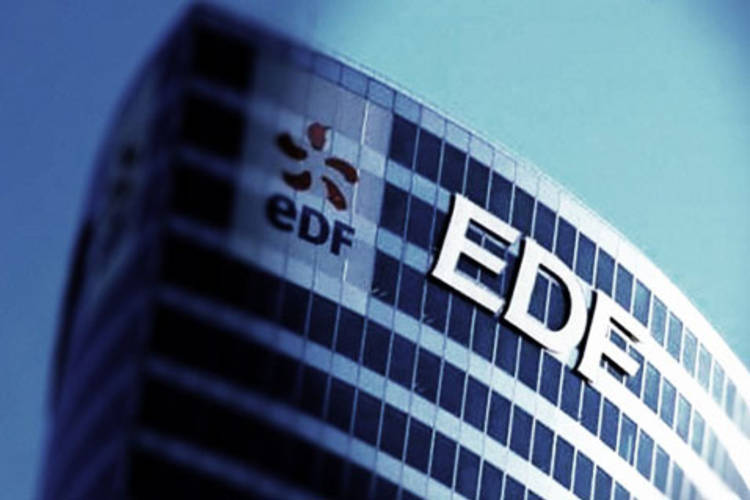How Edf moved on the nuclear accident in China. Le Monde Report

What Le Monde writes about EDF's moves after the accident at the Taishan nuclear power plant, in China
On Monday 14 June, EDF experts provided technical details on the accident that occurred at EPR reactor No. 1 of the Taishan power plant in southwest China.
A few hours earlier, the American television channel CNN informed that the American authorities had been warned of this malfunction, on June 8, by Framatome, a subsidiary of EDF and designer of this third generation reactor, of which two units are in operation in China since 2019.
"We are not faced with a dynamics of accident with core melting," said a spokesman for the French group, thus relativizing the seriousness of the problem. Although the operator had to "carry out atmospheric discharges" of rare gases "within the regulatory limits defined by the Chinese safety authority," he added.
These are sheaths of fuel groups that are at the origin of the escape of xenon and krypton in the primary water circuit under pressure of the reactor building at the time of fission, he specified again.
The leak had appeared in October 2020, when the Taishan 1 reactor restarted after a supply of uranium pellets embedded in the zirconium coating. EDF states that at this stage – and on the basis of information provided by its Chinese partners – "it is premature to say whether the reactor will have to be shut down to solve the identified problem".
MANUFACTURING DEFECT
Such an incident has already occurred in France. “According to the rules of operation, beyond a certain concentration threshold of these rare gases, the reactor must be stopped,” recalls Karine Herviou, deputy director general of the Institute of Radiation Protection and Nuclear Safety (IRSN). “We have no information on the level of this threshold, and whether it has been reached or not. When this type of event occurred in France, EDF did not reach the threshold established by the operating rules and was able to wait for the end of the cycle to remove the defective bars. "
How can such an accident be explained? “It may be due to a manufacturing defect in the coating or to 'migrating bodies' (moving screws…)”, replies Ms Herviou. The fuel groups are manufactured by Framatome in its Romans-sur-Isère (Drôme) plant. "Of course, since the Taishan No. 1 reactor is the first of its kind [it is also the first EPR to be commissioned in the world], we will be following this very closely," he warns. The feedback from this experience should be of particular benefit to the Flamanville (Manche) EPR, which is expected to connect to the grid in 2023.
For several months, the reactor operator analyzed the physicochemical parameters. But it was only on Saturday 12 June that EDF was informed of a real deterioration in the situation. The group is in fact a 30% shareholder, with its historical partner CGN, China General Nuclear Power Group (70%), in the TNPJVC joint venture. It is TNPJVC – and not EDF – that operates Taishan, a 3,300 megawatt power plant that supplies five million people in the densely populated region of the Pearl River Delta (Shenzhen-Hongkong-Canton).
DO NOT OFFEND THE CHINESE AUTHORITIES
EDF's management immediately called an extraordinary meeting of the TNPJVC board of directors to put all the known facts on the table and make the necessary decisions. On Monday, June 14 in the afternoon, he was still awaiting the response from the Chinese partners. But in Paris, the government and the nuclear industry go to great lengths not to offend the exacerbated sensitivity of the Chinese authorities, which are impervious to any public questioning.
These Chinese partners refuse, for example, to respond to possible increases by the local nuclear safety authority in regulatory thresholds for the release of noble gases into the atmosphere (after most of the radioactivity has been removed) . This is a possible measure to keep the plant running, as electricity consumption exceeds production in parts of China. “Only the operator can tell,” says EDF. CGN states that "regular monitoring data show that the plant and the surrounding environmental context have normal parameters".
A former EDF executive, a great expert on China, is peremptory: the security authority would never hide radioactive releases. As for the International Atomic Energy Agency (IAEA), he wanted to reassure: "At this stage, he said on Monday, we have no indication that a radioactive accident has occurred." The event is not even registered on the international INES scale, which classifies nuclear accidents according to their radiological risks on a scale of 1 to 7 (Chernobyl).
It is undoubtedly more complex in political terms than in industrial or environmental terms. For example, we don't know why it was Framatome's US branch that alerted the Department of Energy (DoE) in Washington, and what the Biden administration has to do with it. Except that CGN, a giant of the Chinese nuclear sector with CNNC, was included by the United States, in August 2019, in the black list of groups with which American companies can no longer work. This is not the case in France: CGN has been a partner of EDF for forty years and finances a third of the two EPRs of Hinkley Point in the United Kingdom.
(Extract from the foreign press review by Epr Comunicazione )
This is a machine translation from Italian language of a post published on Start Magazine at the URL https://www.startmag.it/energia/edf-cina-incidente-centrale-nucleare/ on Sat, 19 Jun 2021 06:00:38 +0000.
